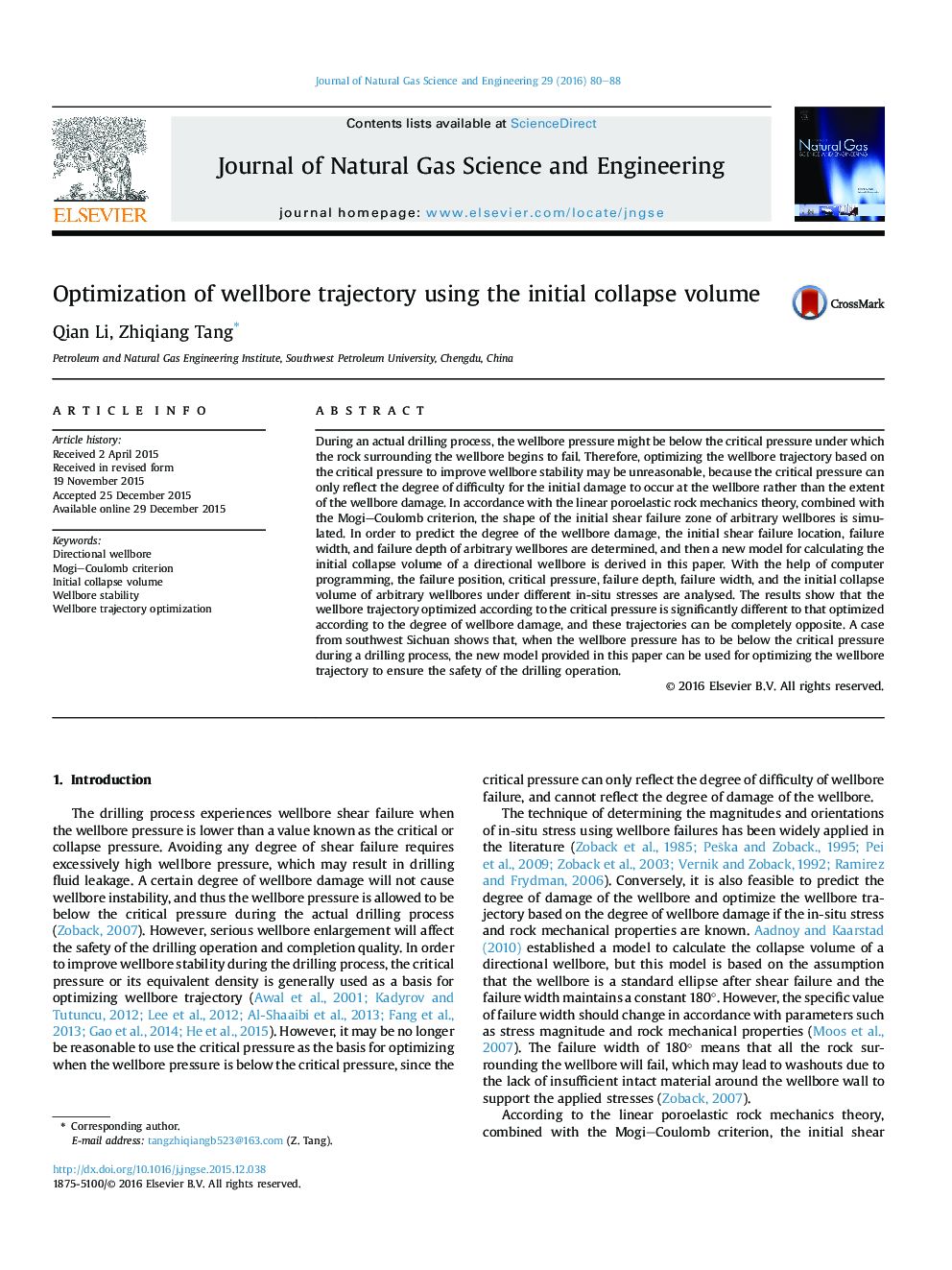| Article ID | Journal | Published Year | Pages | File Type |
|---|---|---|---|---|
| 1757341 | Journal of Natural Gas Science and Engineering | 2016 | 9 Pages |
Abstract
During an actual drilling process, the wellbore pressure might be below the critical pressure under which the rock surrounding the wellbore begins to fail. Therefore, optimizing the wellbore trajectory based on the critical pressure to improve wellbore stability may be unreasonable, because the critical pressure can only reflect the degree of difficulty for the initial damage to occur at the wellbore rather than the extent of the wellbore damage. In accordance with the linear poroelastic rock mechanics theory, combined with the Mogi-Coulomb criterion, the shape of the initial shear failure zone of arbitrary wellbores is simulated. In order to predict the degree of the wellbore damage, the initial shear failure location, failure width, and failure depth of arbitrary wellbores are determined, and then a new model for calculating the initial collapse volume of a directional wellbore is derived in this paper. With the help of computer programming, the failure position, critical pressure, failure depth, failure width, and the initial collapse volume of arbitrary wellbores under different in-situ stresses are analysed. The results show that the wellbore trajectory optimized according to the critical pressure is significantly different to that optimized according to the degree of wellbore damage, and these trajectories can be completely opposite. A case from southwest Sichuan shows that, when the wellbore pressure has to be below the critical pressure during a drilling process, the new model provided in this paper can be used for optimizing the wellbore trajectory to ensure the safety of the drilling operation.
Keywords
Related Topics
Physical Sciences and Engineering
Earth and Planetary Sciences
Earth and Planetary Sciences (General)
Authors
Qian Li, Zhiqiang Tang,
